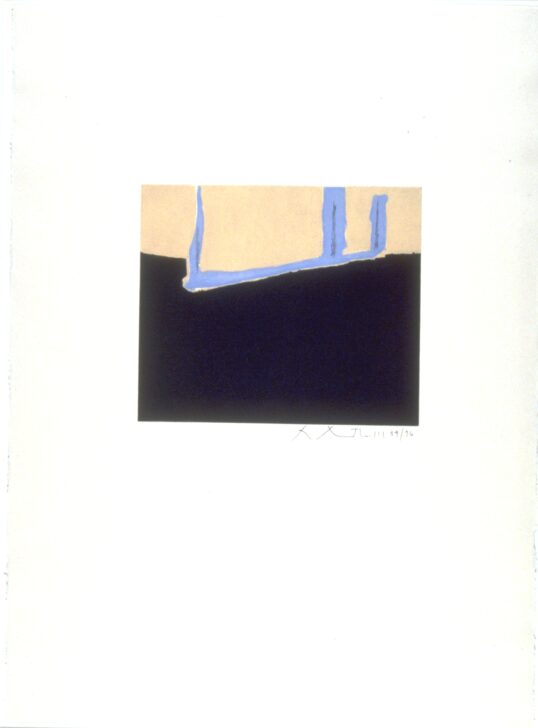Untitled (blue, black, beige)
Robert Motherwell

Description
Robert Motherwell continuously changed his style, building upon earlier ideas but drawing from currents around him throughout his career. Initially finding himself among European emigré artists, Motherwell responded to the ideas of Cubism and Surrealism they fostered. He experimented with automatic painting and collage, as can be seen in several of his works from the 1940s. Throughout his career, however, structure played an important role, in many cases through the incorporation of vertical elements. Evidence of the artist’s hand is an important component of Motherwell’s work, and his color palette has often favored the stark, somber, and moody. In the 1960s, he explored monochromatic painting, as in his Open series, in which the color field was often crossed by a single line representing a window.
These three works all date from the early to mid-1970s and represent a departure from the Open series. All possess the same basic form, a squared-off, right-angled "U," sometimes with additional vertical elements. These forms are meant to recall a window or French door and to evoke the experience of looking into an open, endless space. Although the colors range from dark and moody to jarring and vibrating, each is linked to the other by this window onto other worlds, which Motherwell invites each viewer to experience visually and mentally.
Sean M. Ulmer, University Curator of Modern and Contemporary Art, on the occasion of the exhibition The New York School: Abstract Expressionism and Beyond, July 20, 2002 – January 19, 2003
Usage Rights:
If you are interested in using an image for a publication, please visit https://umma.umich.edu/request-image/ for more information and to fill out the online Image Rights and Reproductions Request Form.